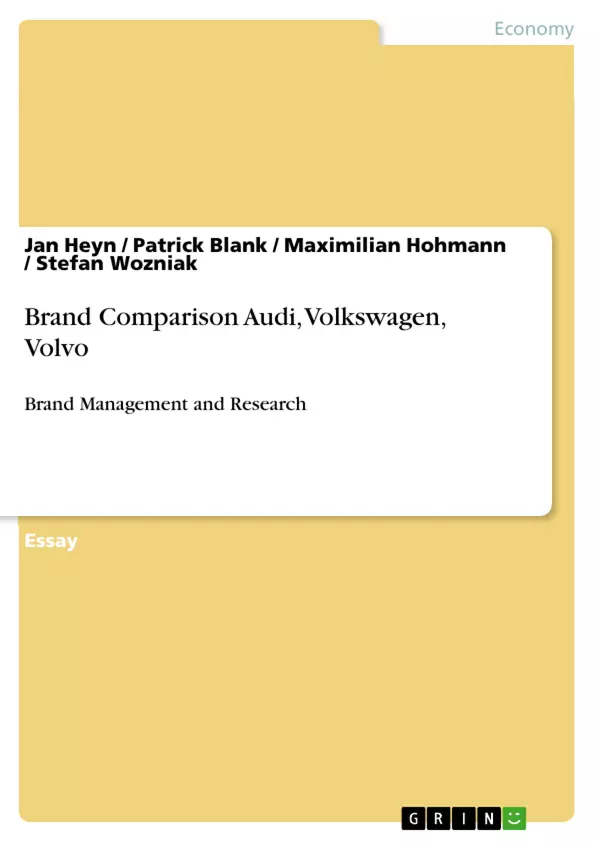The American Marketing Association defined in the 1960s a brand as “a name, term, sign,
symbol, or design, or a combination of them which is intended to identify the goods or services
of one seller or a group of sellers and to differentiate them from those of competitors”.
Three brands of the automobile sector have been chosen which will be analyzed in the following
report. This particular industry sector is interesting because of the limitation in building
cars differently what makes the brand image even more important (Kapferer 2008). The
brand position, image and effectiveness of Volkswagen, Audi and Volvo will be critically
evaluated to conclude with recommendations. These brands are an appropriate choice because
they are differentially positioned and the companies use furthermore different strategies
to sell their products. After all, a conclusion will give recommendations and future directions.
Table of Contents
- 1. Introduction
- 2. Findings and Recommendations
- 2.1. Brand Identity Overview
- 2.2. Theories
- 2.2.1. Iceberg Model
- 2.2.2. Positioning Diagram
- 2.2.3. Brand Feeling Dimensions
- 2.2.4. The Big Five
- 2.2.5. Brand Message Strategy within Advertisement
- 3. Conclusion
- 4. Literature
Objectives and Key Themes
This report analyzes the brand identity, image, and effectiveness of Volkswagen, Audi, and Volvo within the automotive sector. The main objective is to provide a critical evaluation of these brands' positioning, strategies, and overall effectiveness in the marketplace. The report seeks to provide recommendations for future brand management strategies. Key themes and topics covered in this report include:- Brand identity overview
- Brand positioning strategies
- Theories of brand management
- Brand message strategy within advertising
- Target audience and brand perception
Chapter Summaries
The introduction defines the concept of a brand based on the American Marketing Association's definition. It highlights the importance of brand image in the automobile sector due to the limited scope for differentiation in product design. The report outlines the specific brands that will be analyzed (Volkswagen, Audi, and Volvo) and states the objectives and structure of the report.
The "Findings and Recommendations" section delves into the analysis of the three brands. It begins with an overview of their respective brand identities, examining their logos, manufacturer information, price segment, promotion claims, product attributes, and target groups. The section then introduces various brand management theories and frameworks such as the Iceberg Model, positioning diagrams, brand feeling dimensions, and the Big Five model. These theoretical frameworks are applied to analyze the positioning and brand image of each brand. The section further examines how these brands implement their brand message strategies within their advertising campaigns.
Keywords
The main keywords and focus topics of this report include brand identity, brand image, brand positioning, brand management, advertising, target audience, Volkswagen, Audi, Volvo, and the automotive sector. The report examines various theories and models including the Iceberg Model, Positioning Diagram, Brand Feeling Dimensions, and The Big Five, to analyze the brand strategies and effectiveness of the three selected brands.- Quote paper
- MSc./ Dipl. Jan Heyn (Author), Patrick Blank (Author), Maximilian Hohmann (Author), Stefan Wozniak (Author), 2010, Brand Comparison Audi, Volkswagen, Volvo, Munich, GRIN Verlag, https://www.grin.com/document/192568



